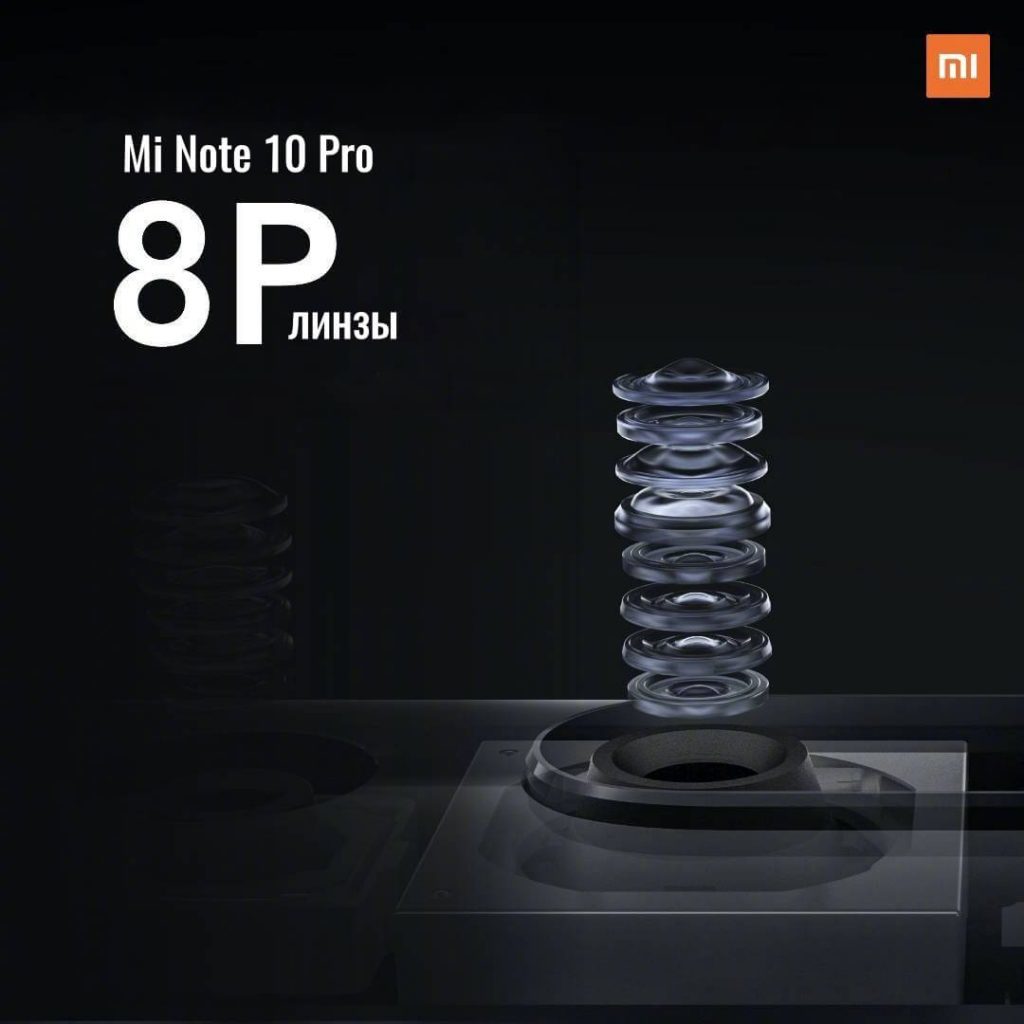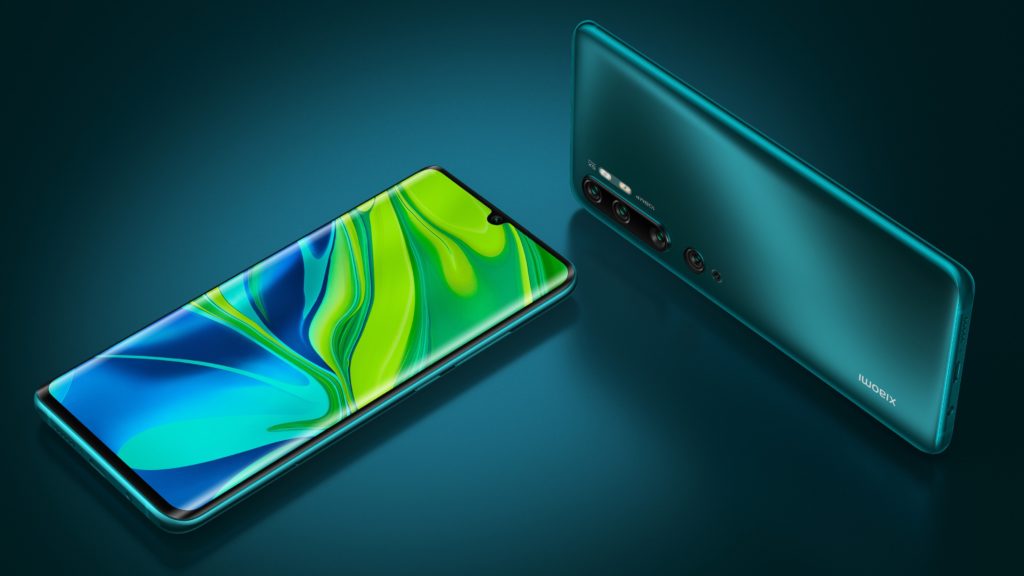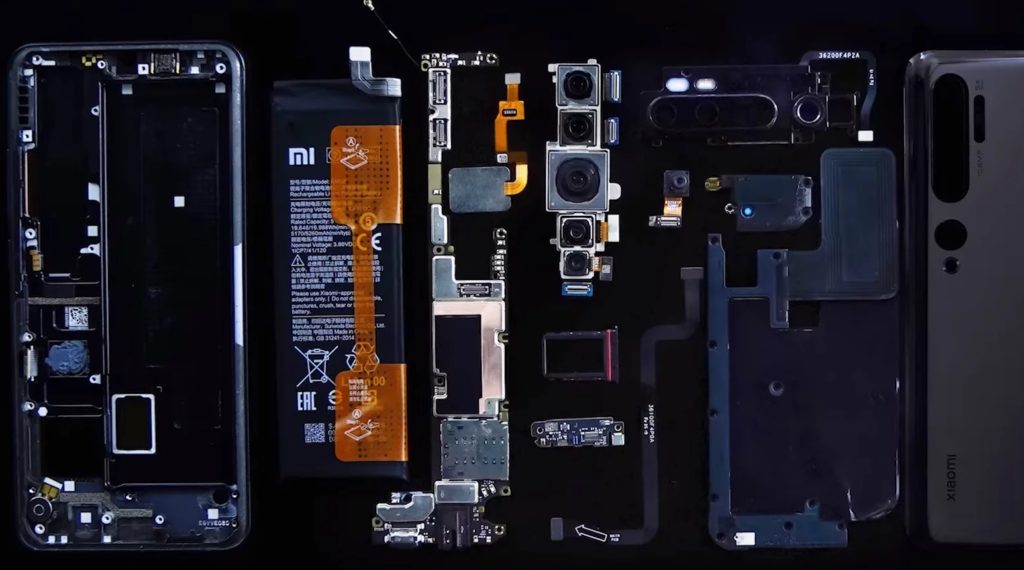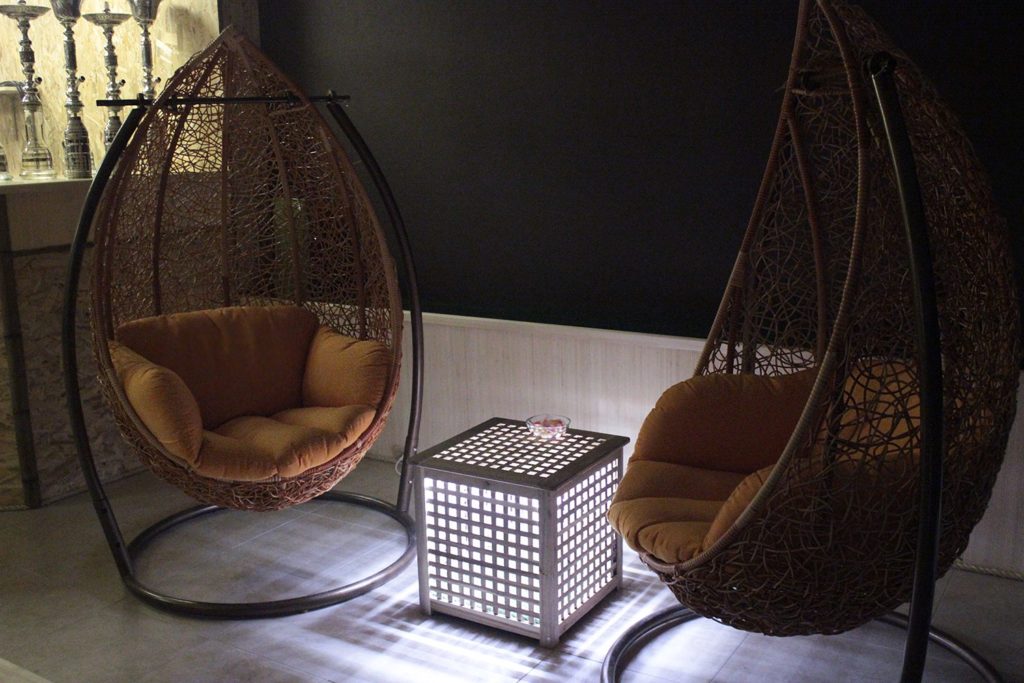Review of the smartphone Xiaomi Mi Note 10 Pro with its main characteristics

Loved by many, Xiaomi company has presented a surprise to fans of great pictures: it has released a new product that has as many as six cameras. The manufacturer has not only conquered a new peak, but also surpassed the notorious iPhone.
Read our review of the new Xiaomi Mi Note 10 Pro, where we will acquaint you in detail with the main characteristics of the smartphone, its functionality and tell you about the advantages and disadvantages, if, of course, the latter are found.
A little about the company

Xiaomi is a reliable company from the Middle Kingdom, which never ceases to delight us with a wide range of products designed for various market segments.
In our country, people often ask the question: "How do you pronounce the name of the manufacturer?" The experts gave their answer, it is required to say: "Sayomi".
If you translate the name of the company into Russian, you get "little rice", and if you simplify it, then "a grain of rice".
The history of Xiaomi began, when in 2010 the talented IT specialist Lei Jun, competently selected partners and started producing OS for smartphones, calling it MIUI.
Less than two years later, the products became extremely popular.
The company's strategy is based on savings:
- management has fewer brand sections at its disposal than other brands;
- the product is sold with a minimal mark-up, which is quite attractive for consumers.
On the Internet, there are many positive reviews about the products of "Rice Grain", and every year the company rises higher and higher.
About model

The outgoing year brought several interesting trends that each manufacturer of equipment implements in its own way. The main directions concern the resolution of matrixes of mobile cameras and their number.
The Xiaomi company decided not to waste time on trifles and surprise the world community on all fronts at once. Six cameras for all occasions, and one with a maximum resolution of 108 megapixels! Camera? No, you haven't heard why you need it!
Specifications:
| Name | Parameter | Value |
|---|---|---|
| Net | Technology | GSM / HSPA / LTE |
| LAUNCH | Date of announcement | November 2019 |
| Status | Will be presented in December 2019 | |
| Housing | Dimensions | 157.8 x 74.2 x 9.7 mm |
| Weight | 208 gram | |
| Housing | Front and back surfaces - glass (Gorilla Glass 5), aluminum frame | |
| SIM card | Dual SIM (Nano-SIM format) | |
| Display | A type | AMOLED matrix, capacitive touchscreen, 16 million colors |
| The size | Diagonal 6.47 inches, 102.8 cm2 (~ 87.8% of front surface area) | |
| Screen resolution | 1080 x 2340 dots, 19.5: 9 aspect ratio (~ 398 ppi pixel density) | |
| Protective covering | Gorilla Glass 5 | |
| Brightness | max 600 nits | |
| Color space | DCI-P3 | |
| Dynamic range | HDR10 | |
| Additionally | Always-on option | |
| Platform | operating system | Android 9.0 (Pie); MIUI 11 |
| Chipset | Qualcomm SDM730 Snapdragon 730G (8nm) | |
| CPU | Octa-core (2x2.2 GHz Kryo 470 Gold & 6x1.8 GHz Kryo 470 Silver) | |
| Graphics core | Adreno 618 | |
| Memory | Memory card slot | is absent |
| Built-in memory | 256GB 8GB RAM | |
| Rear camera | Five | 108 MP (8P lens), f / 1.7, 25mm (wide), 1 / 1.33 ", 0.8µm, PDAF, Laser AF, OIS |
| 12 MP, f / 2.0, 50mm (telephoto), 1 / 2.55 ", 1.4μm, Dual Pixel PDAF, Laser AF, 2x optical zoom | ||
| 5MP (expandable to 8MP), f / 2.0, (telephoto), 1.0μm, PDAF, Laser AF, OIS, 5x optical zoom | ||
| 20 MP, f / 2.2, 13mm (super wide-angle), 1 / 2.8 ", 1.0µm, Laser AF | ||
| 2 MP, f / 2.4, 1/5 ", 1.75µm (used in macro mode) | ||
| Additionally | Four-LED dual-tone flash, HDR | |
| Video | 2160p @ 30fps, 1080p @ 30/60/120 / 240fps, 720p @ 960fps | |
| Front-camera | Single | 32 MP, f / 2.0, 0.8µm |
| Additionally | HDR | |
| Video | 1080p @ 30fps | |
| Sound | Speaker | There is |
| 3.5mm jack | There is | |
| Active noise cancellation system | ||
| 24-bit / 192kHz audio | ||
| Connections | WLAN | Wi-Fi 802.11 a / b / g / n / ac, dual-band, Wi-Fi Direct, hotspot |
| Bluetooth | 5.0, A2DP, LE, aptX HD | |
| GPS | Yes, support for systems: A-GPS, GLONASS, GALILEO, BDS | |
| NFC | There is | |
| Infrared port | There is | |
| Radio | FM band | |
| USB | 2.0, Type-C 1.0 reversible connector | |
| Additionally | Sensors | Acceleration sensor, gyroscope, position sensor, compass, fingerprint scanner (optical, under the display) |
| Battery | Non-removable Li-Po battery, 5260 mAh | |
| Charging | 30W charger (58% in 30 min., 100% in 65 min.) | |
| USB Power Delivery | ||
| Miscellaneous | Color scheme | Green, black, white |
| Price | $ 649.00 |
Camera

Drum roll, camera! This is how this miracle of technology should be called. And there is an explanation for this - at the moment, we have the most sophisticated camera in the world of mobile electronics. Just think, the smartphone contains on board as many as six image processing matrices. Let's consider each separately.
The main camera has a resolution of 108 megapixels, which you don't often see. Samsung's cutting edge ISOCELL Bright HMX sensor and eight aspherical lens work wonders. The examples presented show the highest quality of images: color rendition and detailing are at a height. We also add that the main camera can shoot in 27 megapixel mode - combining 4 pixels into one. And the optical stabilization system will be very useful for shooting on the move.
The next two modules are telephoto lenses with a resolution of 12 megapixels and 8 megapixels, the latter also with an optical stabilization system and a 5x optical zoom. The modules listed above are equipped with a face recognition system. The 12 megapixel camera is tailored for portrait photography.

The fourth module is an ultra-wide-angle camera with a resolution of 20 megapixels and a viewing angle of 117 degrees. Allows you to capture a little more space in the frame. All cameras have an autofocus system.
The last rear module is a macro camera with a matrix resolution of 2 megapixels. It will be very useful for fans of filming microcosm objects. Focal length: 2 to 10 centimeters.
Finally, there is the front camera. Just imagine, the resolution is 32 megapixels. Some camera phones do not even have such a matrix as the main camera. Selfie fans will love it, that's for sure.
- there are cameras for all occasions.
- not found.
Display

The smartphone uses an AMOLED display with a Full HD + 1080 x 2340 pixels resolution with a diagonal of 6.47 inches. The solution is correct and is used for several reasons:
- excellent readability in bright sunlight;
- the ability to place a fingerprint scanner under the display;
- implementation of the Always-on function, which allows you to display information during the entire operation of the device.
The screen itself occupies almost the entire ~ 87.8% of the front surface of the phone, except for the drop-shaped cutout in the upper part of the display for the front camera. While most manufacturers prefer to install a selfie camera in a special screen cutout, Xiaomi remains an adherent of the "bangs".
The pixel density may not be the highest for today ~ 398 ppi, but you will have to try to see the graininess of the image. The 19.5: 9 aspect ratio is not quite cinematic, so black bars will appear on the screen when watching movies.
- AMOLED display;
- aspect ratio 19.5: 9.
Filling

In the initial insider reports, it was said that the device was based on the Snapdragon 855 processor. But the rumors were not confirmed. In order to save energy and reduce the cost of the final product, it was decided to supply Snapdragon 730G.
The model will come with one fixed 8GB of RAM. The built-in memory is 256 GB and it is not expandable with memory cards.On the one hand, the volume is quite decent and should be enough for everyone. But with the main camera 108 megapixels, you want to shoot and shoot, so free memory will decrease before our eyes.
Also, do not forget about the risk of failure of the device, all data will remain on it, and you will have to resort to the help of specialists to extract them. In general, the decision is controversial, let's leave it on the conscience of the manufacturers.
- productive processor;
- large amount of RAM.
- no memory card slot.
Design

From the point of view of design, we will not see any intricate forms here, everything is standard, an ordinary candy bar. As a distinctive feature, you can specify the camera unit on the back of the smartphone. It looks very unusual because of the abundance of so many matrices.
The fingerprint scanner has migrated under the display, and, moreover, the manufacturer especially noted the increased area of the sensor, so now it will be easier to authorize.
On the right side of the device, the power button and the volume rocker are traditionally sheltered. The SIM card slot is located on the left side. The top edge is crowned with an IR port and a noise-canceling microphone, while the bottom houses a 3.5mm headphone jack, a USB Type-C charging jack and a speaker grill.
The back is made of glass and is glued to an aluminum frame. There are three color solutions:
- midnight black;
- glacial white;
- emerald green.
- stylish design;
- 3.5 mm jack.
- not found
Connections

In one word, everything is here:
- Wi-Fi a / b / g / n / ac;
- Bluetooth version 5.0;
- GPS with support for major navigation systems.
There is even NFC and infrared, which make life a lot easier for the advanced user. Evil tongues claim that this phone is an exact copy of the Huawei P30 Pro, but the latter does not have a 3.5mm Jack.
To the credit of Xiaomi, we can say that it does not forget ordinary users who like to listen to music over the wire.
- NFC module.
- not found.
Autonomy

With a 5260 mAh battery, there is no chance of draining your smartphone in one day. The manufacturer guarantees two full days of operation on a single charge. And we have no reason to doubt this.
An energy efficient processor, AMOLED display and a large battery are a decent set for long battery life.
The set comes with a 30W charger. In fast charging mode, tests showed a 58% fill rate in just half an hour, and a full charge takes just over an hour.
- capacious battery;
- fast charging.
- not found.
Price
At the moment, the device is manufactured in China under the brand name Mi CC9 Pro for internal use only. It is possible to purchase it, but the buyer will have to take care of the localization process.
Officially, the international version, according to the presentation, should be released in December 2019. Thus, Xiaomi is hinting what kind of gift for the New Year holidays it would be nice to give to your loved ones.
The price according to preliminary data is about $ 650. Which is pretty good considering the really cool specs of the phone and the fact that models like the iPhone 11 Pro Max, Samsung Galaxy Note 10+ or Huawei P30 Pro cost significantly more. From the mid-budget category in this device, only the price.
Output
Despite minor flaws, Xiaomi Mi Note 10 Pro is aiming for the top model of the year. Perhaps this is the first model of a new class - extra camera phones that can fully replace a digital camera. Fantastic camera specifications and affordable price make this model worthy of closer acquaintance in the eyes of most potential buyers.
new entries
Categories
Useful
Popular articles
-

Top rating of the best and inexpensive scooters up to 50 cubic meters in 2024
Views: 97661 -

Rating of the best materials for noise insulation for an apartment in 2024
Views: 95022 -

Rating of cheap analogues of expensive medicines for flu and colds for 2024
Views: 91751 -

The best men's running shoes in 2024
Views: 87680 -

Top ranking of the best smartwatches 2024 - price-quality
Views: 85091 -

Best Complex Vitamins in 2024
Views: 84801 -

The best dye for gray hair - 2024 top ranking
Views: 82406 -

Rating of the best wood paints for interior use in 2024
Views: 77202 -

Ranking of the best action cameras from China in 2024
Views: 75269 -

Rating of the best spinning reels in 2024
Views: 74827 -

The most effective calcium supplements for adults and children in 2024
Views: 72462 -

Top rating of the best in 2024 means for male potency with a description
Views: 68296








